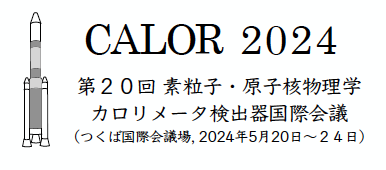Speaker
Description
Calorimetry is a fundamental technique in particle physics. It entails precisely measuring the energy of particles deposited during their interaction with detector materials, furnishing crucial insights into their properties and behavior. Recent breakthroughs in materials science,in achieving tunable and narrow emission bandwidths (∼20 nm) in nano-material scintillators containing quantum dots have paved the way for a novel particle physics method known as chromatic calorimetry. This method allows for tracking the progression of electromagnetic or hadronic showers within a calorimeter module, offering the potential to obtain a detailed view of the shower profile. The concept involves strategically layering scintillators with various emission wavelengths. Specifically the nanomaterial scintillators, with those emitting the longest wavelengths positioned at the beginning and the shortest wavelengths placed towards the end of the module. This allows for fine-grained measurements of shower developments and aims to enhance the detector’s particle identification and energy resolution capability. Building upon this foundation, this presented study serves as a proof of concept to validate the relevance of the method by utilizing standard inorganic scintillators with various emission wavelengths. We begin with employing a stack of different inorganic bulk scintillators with different emission spectra strategically positioned in decreasing wavelength maxima, to enable one-directional transparency as per chromatic calorimetry requirement. The stack was excited using pions & electrons with 100 GeV energy. The findings shed light on longitudinal shower measurement and analytical discrimination between electrons and pions. This study highlights the potential to refine and optimize the functionalities of chromatic calorimetry for broader applications.
